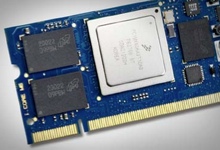DRAM prices up as market matures: IHS

One of the key components of a PC is RAM, but as consumers shift from PCs to post-PC devices, the market has had to endure considerable changes. But a recent market report from research firm IHS suggests that the market has achieved some maturing despite the challenges.

One challenge facing the industry has been controlling falling output as PC sales stalled. DRAM wafer output peaked in 2008 at 16.4 million 300-millimeter-equivalent wafers, and has been declining steadily since. This year, the output is expected to decline by 24 percent to 13.0 million wafers this year, according to IHS.
Curbing DRAM capacity is good for the industry, as it allows for a gradual normalization between supply and demand. In fact, IHS believes that the industry is now believed to be slightly undersized relative to demand moving forward because of the intentional slash in output, and DRAM pricing can continue to remain firm if production stays slightly behind demand.
DRAM revenue during the first quarter rose to its highest level in nearly two years, thanks to a jump in commodity prices as a result of increasing demand from the server PC and mobile PC segments. Pricing for a 4GB DDR3 module jumped to $23 in March, up from $16 in December. This, according to IHS, represents "an unusually large increase".
"The DRAM industry has struggled with major challenges in recent years, including chronic oversupply and slowing demand from its main market, the PC business," said Mike Howard, senior principal analyst for DRAM and memory at IHS in a note to ZDNet. "This has led to continued weak pricing, financial losses, and market revenue declines. However, the DRAM industry has entered a more mature state, enacting structural changes that will allow it to grow even in challenging market conditions."
Not only does the industry have to respond to falling demand, but also a change in what the DRAM is used for. A decade ago, about 65 percent of all DRAM shipments ended up inside desktop and notebook PCs. Nowadays, that figure has dropped below 50 percent, and this is expected to fall below 40 percent by the end of next year.
The slack is being taken up by servers and mobile gadgets like smartphones and tablets, which command an ever-increasing share of DRAM shipments.
IHS also pointed out that there have been huge shifts within the industry itself as once big names in DRAM — such as Qimonda of Germany and Elpida Memory of Japan — have gone bankrupt or have been bought out by others. By the end of the year, only three major players will exist: Samsung and SK Hynix, both based in South Korea, and the US-based Micron Technology.
Finally, the pace of change is slowing down as the engineering challenges associated with shrinking DRAM size smaller than a 30-nanometer increase.
"While the current state of intermittent undersupply is favorable to the industry," IHS said, "a state of persistent undersupply could backfire and prove harmful. Large, obstinate supply shortfalls will result in broader adoption of competing technologies as devices seek alternatives besides DRAM, and possible regulatory intervention could occur over perceived anticompetitive concerns."
IHS said that it is in the best interests of the industry "to manage supply so that it more closely matches demand" and look for ways to accommodate the current demand.